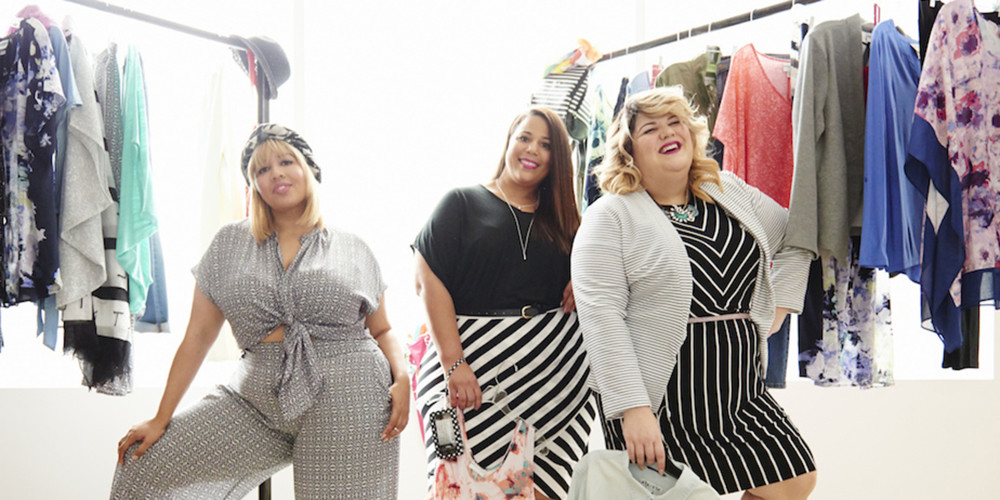By Suzette Parmley
The Philadelphia Inquirer
WWR Article Summary (tl;dr) The plus-size market is estimated to be at $20 billion in sales per year. For women in business with a focus on fashion, this is a customer base NOT to be ignored. Two-thirds of U.S. females consider themselves to be a special size, and of that, one-third identify as plus size.
The Philadelphia Inquirer
After being the Rodney Dangerfield of retail for so long, “plus size” customers are finally getting some respect.
The plus-size sector is booming as women’s apparel stores such as stalwart Lane Bryant and 15-year-old Torrid, which cater to women and girls who wear bigger sizes, typically 14 and up, reported sales growth last year.
And what about that trio of Sports Illustrated covers for the magazine’s 2016 swimsuit issue? One of them features — drum roll, please — plus-size model Ashley Graham, 28, who happens to be the face of Lane Bryant.
This month, Glamour came out with its first plus-size-focused special edition, although Amy Schumer, America’s reigning Comedic It Girl, roundly criticized the magazine for including her in the edition, claiming she wasn’t really “plus size” and fluctuates between sizes 6 and 8.
Still, apparel retailers “are embracing plus size,” said Howard Davidowitz, chairman of Davidowitz & Associates Inc., a national retail consulting firm.
There’s a big incentive. The plus-size market is estimated at $20 billion a year in sales.
Two-thirds of U.S. females consider themselves to be a special size, and of that, one-third identify as plus size.
While there has been a decline in U.S. teens’ purchasing in the junior size category — from 81 percent in 2012, to 73 percent in 2015 — the percentage of those buying plus-size clothes has almost doubled to 34 percent, from 19 percent in 2012, according to a 2015 Women’s Special Sizes Study by the NPD Group Inc., a global research firm, which was released last month.
“Junior sales are down due to increased competition for the customer’s disposable income [e.g. iPhones], availability of cheaper fashion [e.g. Forever 21], and less need to wear a brand [such as Abercrombie & Fitch],” Davidowitz said. “Plus-size sales are up because of more fashionable offerings, not because the number of plus-size teens have doubled in three years.”
Plus-size racks now have more than loose blouses and dresses — and offer pants, shoes, and accessories, among other things.
“In the new century, the emphasis has been on the growth of fashion in the plus-size offerings — appealing to both teens and women,” Davidowitz said. “This has sparked new growth, not just in dedicated stores, but in most women’s retailers, like Forever 21, H&M, Macy’s, JC Penney, and others.”
Davidowitz said the plus-size trend began to gain steam in the 1980s and 1990s with basic commodity items. By the 2000s, fashion got on board.
“I would not characterize Lane Bryant [more than a century old] and Ashley Stewart [25 years old] as ‘popping up,’ ” he said. “The selection has gotten better.”
Lane Bryant, which specializes in plus-size clothing, lingerie, shoes, and accessories, has had a nice run.
Founded in 1904, the chain, once owned by Charming Shoppes of Bensalem and later acquired by Ascena Retail Group Inc., focuses on new and inactive customers through strong brand campaigns, such as “I’m No Angel” — which played off the sizes of Victoria’s Secret’s “Angels.”
Six months ago, it began the ad campaign — “This Body is Made For . . .” to incorporate a positive body image message. Graham and other plus-size models are wearing the brand’s latest fashions in the ads.
Patty Evans, 64, of Somerton, who scans medical records for Penn Medicine, recently bought three blouses on sale for $59 at the free-standing Lane Bryant in Langhorne.
“The clothes are stylish and comfortable,” said Evans, who has shopped for nearly four decades at the chain.
Stephanie Bissol, 38, a stay-at-home mom from Washington Crossing, said Lane Bryant filled a void that exists at most department stores, such as Macy’s.
“I have a hard time finding clothes that I like,” she said. “Clothes [for bigger women] tend to look older.
“With department stores, you can’t buy something you like in a regular size, in a plus size,” Bissol said. “They stop at sizes 12 and 14. [Lane Bryant] is close to a department store.”
Comparable sales at Lane Bryant stores that were open at least a year were up 2 percent in 2015 over the prior year.
For Bissol, another plus is that Lane Bryant carries active wear. “I like that they have athletic clothes in my size,” she said. “I like playing tennis and being active, and I like loose-fitting clothing when I’m out there.”
Torrid, which started in 2001 in Brea, Calif., and specializes in clothing for women sizes 12-26, opened a store at Oxford Valley Mall last year, said Jim Malervy, the mall’s director of marketing.
“We wanted to cater to all customers,” he said of Torrid’s March 2015 opening. “It appears that sector was ignored in the past and people are asking for it.”
As the fastest-growing American plus-size fashion brand, Torrid has more than 179 stores in 36 states. It opened 60 stores last year alone — including 10 in Chicago. Both Torrid and Lane Bryant have multiple stores across the Philadelphia region.
Like Lane Bryant, Torrid’s brand message is one of empowerment, encouraging women of all sizes to “wear what you love” without apologies.
“I’m grateful for finding this store,” said Amy Thompson, 36, an administrative assistant and single parent from Morrisville.
Thompson wears a size 18 and recently shopped at the Oxford Valley Torrid for tops, bottoms, sunglasses, and leggings.
“It’s no longer about wearing a muumuu because that’s all we have to pick from,” she said. “Someone realized that the plus-size shopper was being overlooked.
“We deserve to look and feel beautiful just like everyone else.”














































































































































































































































































































































































